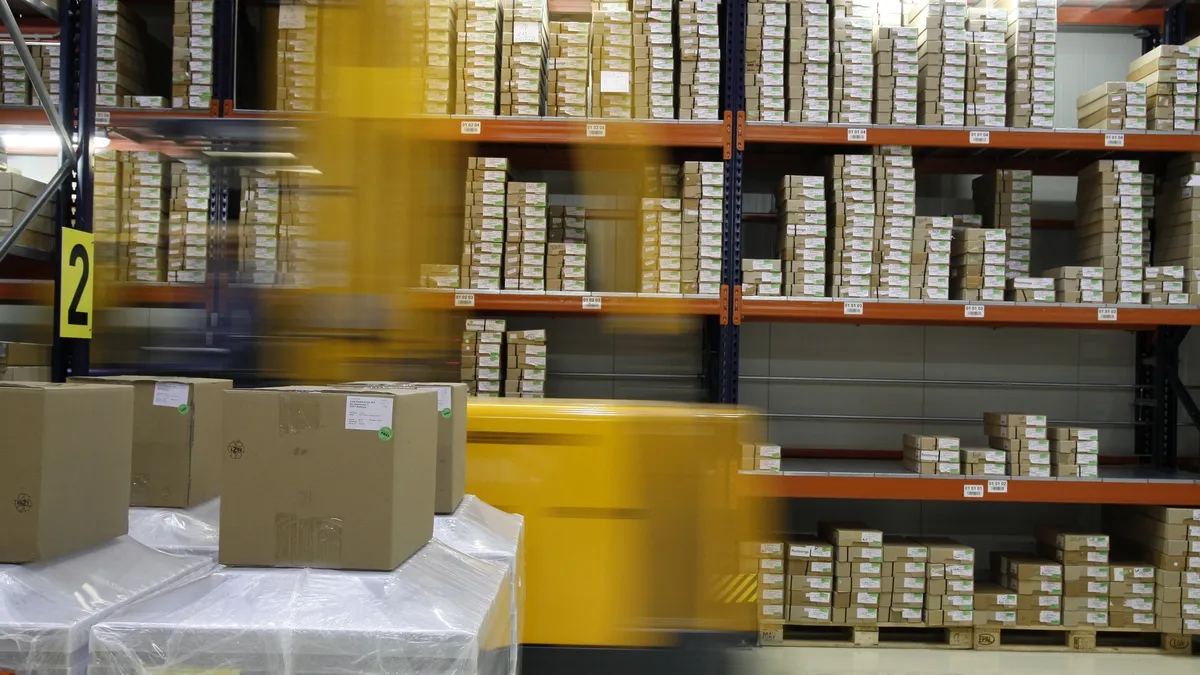2018 holiday retail sales grew at their fastest pace in six years to top $850 billion, according to Mastercard SpendingPulse data. This brings good news specifically for manufacturers and retailers, but higher profits for companies can be a strain on supply chains everywhere. Meeting deadlines, shipping merchandise, and keeping track of invoices can become exponentially more difficult during a busy season.
To capitalize, companies must overcome any number of supply chain-related challenges, many of which directly affect customer experience. With incredibly high customer expectations set by the on-demand industry, companies need reinforcement in the form of technology like artificial intelligence (AI), machine learning, and the internet of things (IoT).
Complexity across the manufacturing and retail landscapes has evolved to unprecedented levels and a breakdown in the supply chain is not an uncommon reason for failures. One of the most talked about challenges in the supply chain industry is the severe driver shortage. Various factors contributed to this major problem, but at the helm were stringent regulatory changes imposed on the trucking industry in an attempt to increase driver safety on the road. This includes a law that limits the number of hours drivers can operate their fleet, which has a direct impact on capacity, driver independence and compensation. As a result, general job malaise is at an all-time high in the trucking industry and turnover is peaking - with an estimated driver shortage of 60,000 and forecasts of a number 3x that size by 2026.
The shortage of trucks to move goods presents a significant problem for the industry, but consumers are not interested in the logistical issues preventing them from getting what they want, when they want it. How is this solved?
Supply Chain Management & Technology
Telematics plays a critical role in trucking, allowing drivers to complete more jobs in fewer hours and miles with real-time visibility into important details like vehicle location, live traffic data and route analytics. Telematics providers are adapting their technology to provide commercial drivers with a complete management program to improve operational efficiencies. It lets truck drivers easily navigate to the closest rest points and reschedule late arrivals with voice on a robotic process automation (RPA) platform. Particularly during the holidays, having direct access to a broad network of truckers is imperative to keep up with increased seasonal demand and finally, automatic and timely proof of delivery (POD) is a must-have when transactions peak during the holiday season.
Predictive analytics has become more useful to address common issues in the freight industry, but the slow adoption of technology leads to stagnation. Industry leaders must collaborate to increase adoption since the proven benefits are significant. For example: managing capacity problems stemming from mandated regulations is simplified with data, enabling a more accurate assessment of contributing factors to future performance, such as weather, job type, driver availability and day of the week. This information powers schedule optimization, shipment tracking, routing, and job prioritization. The end result is greater efficiency which can impact the various challenges and provide relief for industries whose businesses rely on a smooth supply chain, even when facing challenges like weather or lack of drivers.
Smart supply chain management technology enables retailers and freight companies to be more agile by connecting trading partners with truck drivers and other carriers, and optimizing return trips. Technology can also help retailers track their deliveries with real-time shipment visibility that tracks the elusive first- and last-mile pickups, delivery milestones, shipment status, location and verified POD across all modes.
Solving Supply Chain Situations
Automation has transformed business processes across the board, including in the supply chain, but not all retailers or supply chain providers are on board. Where once it was enough to track business activity using pen and paper, this economy demands that every part of the retail supply chain, not just the more complex transactions, is automated.
There are countless logistics inherent in the supply chain. Automation is a lifesaver for retailers looking to reduce complexity by offering a repository of information that stores and automatically populates details, automating processes that lend to creating auditable records, eliminating manual communication and streamlining the payment process.
The path to success is through delivering the best experience for customers, and late shipments leading to empty shelves does not bode well for business. Retailers can say goodbye to the instinctual processes that are inherent to traditional decision-making and replace them with technology that can process a wealth of data to make smarter decisions.










